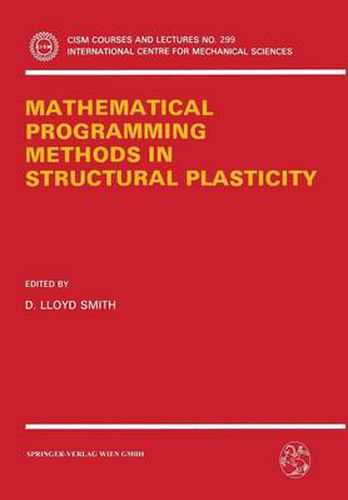Readings Newsletter
Become a Readings Member to make your shopping experience even easier.
Sign in or sign up for free!
You’re not far away from qualifying for FREE standard shipping within Australia
You’ve qualified for FREE standard shipping within Australia
The cart is loading…






This title is printed to order. This book may have been self-published. If so, we cannot guarantee the quality of the content. In the main most books will have gone through the editing process however some may not. We therefore suggest that you be aware of this before ordering this book. If in doubt check either the author or publisher’s details as we are unable to accept any returns unless they are faulty. Please contact us if you have any questions.
Civil engineering structures tend to be fabricated from materials that respond elastically at normal levels of loading. Most such materials, however, would exhibit a marked and ductile inelasticity if the structure were overloaded by accident or by some improbable but naturally occuring phenomeon. Indeed, the very presence of such ductility constitutes an important safety provision for large-scale constructions where human life is at risk. In the comprehensive evaluation of safety in structural design, it is therefore unrealistic not to consider the effects of ductility. This book sets out to show that the bringing together of the theory and methods of mathematical programming with the mathematical theory of plasticity furnishes a model which has a unifying theoretical nature and is entirely representative of observed structural behaviour. The contents of the book provide a review of the relevant aspects of mathematical programming and plasticity theory, together with a detailed presentation of the most interesting and potentially useful applications in both framed and continuum structures: ultimate strength and elastoplastic deformability; shakedown and practical upper bounds on deformation measures; evolutive dynamic response; large displacements and instability; stochastic and fuzzy programming for representing uncertainty in ultimate strength calculations. Besides providing a ready fund of computational algorithms, mathematical programming invests applications in mechanics with a refined mathematical formalism, rich in fundamental theorems, which often gives addi- tional insight into known results and occasionally lead to new ones. In addition to its obvious practical utility, the educational value of the material thoroughly befits a university discipline.
$9.00 standard shipping within Australia
FREE standard shipping within Australia for orders over $100.00
Express & International shipping calculated at checkout
This title is printed to order. This book may have been self-published. If so, we cannot guarantee the quality of the content. In the main most books will have gone through the editing process however some may not. We therefore suggest that you be aware of this before ordering this book. If in doubt check either the author or publisher’s details as we are unable to accept any returns unless they are faulty. Please contact us if you have any questions.
Civil engineering structures tend to be fabricated from materials that respond elastically at normal levels of loading. Most such materials, however, would exhibit a marked and ductile inelasticity if the structure were overloaded by accident or by some improbable but naturally occuring phenomeon. Indeed, the very presence of such ductility constitutes an important safety provision for large-scale constructions where human life is at risk. In the comprehensive evaluation of safety in structural design, it is therefore unrealistic not to consider the effects of ductility. This book sets out to show that the bringing together of the theory and methods of mathematical programming with the mathematical theory of plasticity furnishes a model which has a unifying theoretical nature and is entirely representative of observed structural behaviour. The contents of the book provide a review of the relevant aspects of mathematical programming and plasticity theory, together with a detailed presentation of the most interesting and potentially useful applications in both framed and continuum structures: ultimate strength and elastoplastic deformability; shakedown and practical upper bounds on deformation measures; evolutive dynamic response; large displacements and instability; stochastic and fuzzy programming for representing uncertainty in ultimate strength calculations. Besides providing a ready fund of computational algorithms, mathematical programming invests applications in mechanics with a refined mathematical formalism, rich in fundamental theorems, which often gives addi- tional insight into known results and occasionally lead to new ones. In addition to its obvious practical utility, the educational value of the material thoroughly befits a university discipline.